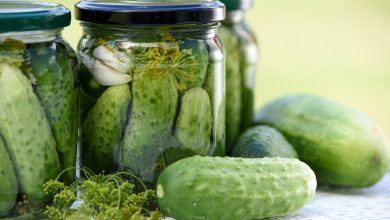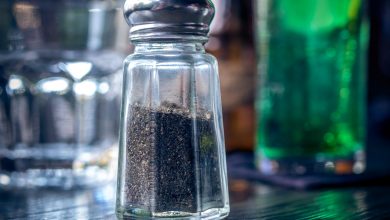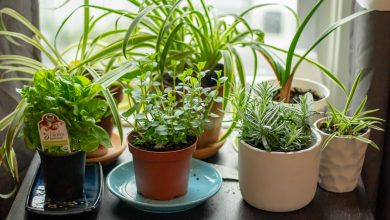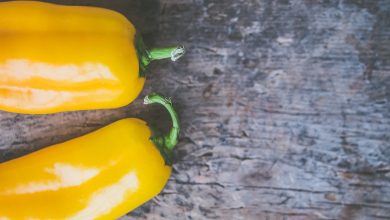How to Grow Potatoes
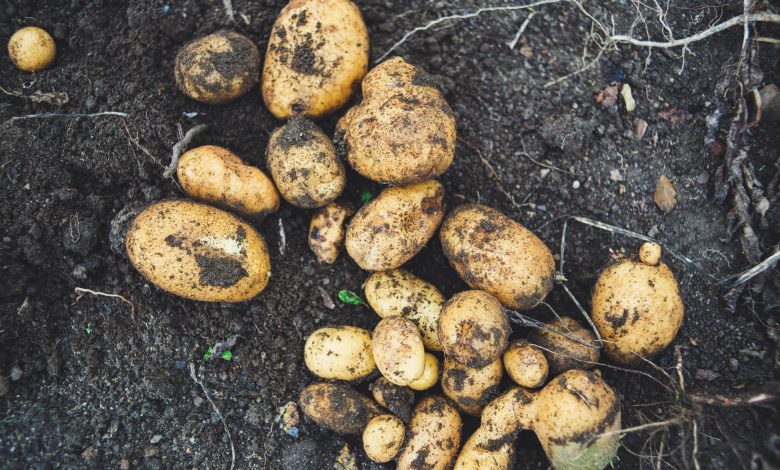
Potatoes are root vegetables that were originally grown in the Americas. Some of the first species of the potato are thought to date back as far as 10,000 years ago. They’ve had a long journey to where they are now, acting as one of our most popular staple food all across the globe.
Only corn, wheat, and rice are in more demand than potatoes. That being said, potatoes are a favorite crop to grow and are a staple of grocery stores all over the world. Potatoes are a very flexible food source that is filling, flavorful, and easy to manipulate into various dishes.
The good news is that we are more than capable of growing our own potatoes at a fraction of the cost in our own gardens! If you want to know how to grow potatoes in your garden, the following information will be helpful. We cover growing potato plants, caring for them, and harvesting them for your amazing dishes.
The Potato
The potato started out a simple enough food source, but these days, it’s available in thousands of different varieties. They are perennials that can grow as tall as 24 inches in height and are accompanied by flowers that can be purple, pink, red, white, or blue.
Potatoes that have white flowers usually have white tubers, while potatoes with colored flowers usually have pinkish-colored tubers.
Once potatoes have flowered, they will then produce a small green fruit that looks a lot like a small tomato. However, these fruits – like the rest of the plant – are filled with a toxin called alkaloid solanine which makes these parts too dangerous to eat.
There are approximately 5,000 cultivated varieties; another 200 are wild. A great deal of cross-breeding has been done in order to try and fight against diseases and plagues. This need was never more important than after years of potato crop failure caused by late blight, resulting in The Great Potato Famine.
Types of Potatoes
There are far too many potato types to name them all, but each potato variety fits into one of seven categories. These include:
- Russet
- Red
- Yellow
- Blue/Purple
- Fingerling
- White
- Petite
If you’re not sure which potato type to plant, these are some of the most popular varieties that are great for cooking and full of flavor:
Russet Potatoes
These potatoes are on the larger end of the size scale, and they have much thicker skin than new potatoes. They have high starch content, which makes their skin somewhat flaky. Due to the starch, this potato soaks up butter and milk well, making them great for cooking and mashing.
Fingerlings
If you’ve ever been to a fancy restaurant, there’s a good chance you’ve seen the word “fingerlings” on the menu. These popular potatoes are named after their shape, which is long and thin like a finger. They are categorized as new potatoes, and they have a waxy texture which makes them great for roasting. They are often paired with roasted vegetables.
Yukon Golds
Yukon Golds are known for their strong flavor, and they have a bright yellow hue underneath their skin. They contain more starch than new potatoes, but they are higher in moisture than Russet Potatoes. This makes them great for boiling and softening.
Blue Potatoes
Similar to the Yukon Golds, blue potatoes have a fair amount of starch that makes them great to mash or roast. Because of their vibrant blue color, these potatoes are very popular in the culinary world, where they add great flavor, as well as bright visuals.

Growing Potatoes in Your Garden
It’s important to know right off the bat that potatoes are one of the trickiest vegetables to grow in your garden. This is mainly due to the fact that potatoes are grown underground, and it’s hard to know if you’re doing it right until it’s time for harvesting. By then, if you’re making any mistakes, it’s too late to correct them.
That being said, potatoes are difficult to grow but very rewarding to pull out of the ground after months of tending. Some gardeners spend a few seasons perfecting their potato growth and playing with a handful of varieties.
Beginning Your Potato Garden
You might notice when you start looking for potato seeds that you can’t find any. No, they’re not sold out! Potatoes do set seed, but they are not grown from seed. The reason for this is that potatoes do not grow true to seed, which means you can’t always know what you’re going to get with a potato seed.
Instead, gardeners need to begin growing fresh potatoes from a seed potato. This isn’t a seed at all; rather, is it a piece of an existing potato that will ensure you get the kind of potato that you want.
To begin, it is suggested that you do not try to plant a potato that has been purchased at the grocery store. This is mainly due to the commercial vegetables being treated with chemicals so that they last longer in the store. In your garden, they may never do a thing.
Organic potatoes are an option, but there is the chance that these potatoes carry diseases from prior years. Disease-free potato seeds are the best way to go since they have to be certified to be disease-free.
If you have any potato seeds that are cracked or slightly rotten, these should be discarded. Work with the seeds that look the very best to ensure you get a healthy batch. There is no need to plant an entire potato in your garden to have a successful plant. You only need a piece of the potato, and it needs to have at least one eye.
The eye is the location where a new sprout will form. A seed potato that has multiple eyes will give you more potatoes, but fewer eyes mean the potatoes will be larger because they have more space to grow.
Preparing Your Seed Potatoes
A practice that isn’t necessary but some gardeners swear by is chitting. This term refers to the act of helping your potatoes to sprout ahead of time while they’re still indoors. Chitting is common on two occasions:
- When the potato seeds are already sprouting
- You have a potato variety that needs to harvest earlier than others
To chit properly, place your seed potatoes in a tray (like an egg carton) where they can sit straight up. They need to be in a cool place with bright lighting. Sprouts in these conditions will grow strong, as opposed to weak and spindly in darkness.
It will be at least two weeks before the sprouts start to appear, so it’s best to begin this process a month before you plan on planting outdoors.
Planting Your Seed Potatoes
You’ll know that you can plant your seed potatoes as soon as the sprouts are half an inch to one inch long. If for any reason you have to put off planting, it’s a good idea to move the potatoes to a dark space where the sprout growth will slow down.
There are four main methods of planting:
- Trench method: This is the most traditional. Dig a shallow trench about five inches deep and spread the seeds along the row. Cover with a few inches of soil. As the potato plant grows, you can add more soil around the stem.
- Scatter method: This method requires dropping the seeds into the soil without any plan or design in mind. The seeds are then covered with mulch. The only issue with this method is that garden critters have easier access.
- Container method: Containers keep your potatoes safe from critters and some diseases. The best shape for your container is a tall tube, shaped like a garbage can. Fill the first quarter of the container with soil, then lay the seeds. Add soil as the plants grow.
- Raised garden method: A more modern option for the container method is the raised garden option. This helps to avoid garden pests, lack of garden space, and uncomfortable bending.
If you know when you want to plant your potatoes in the vegetable garden, you may cut up the pieces two days prior. This step is important since it will give the potatoes a chance to seal themselves from diseases and rot once they’re in the ground.
If you’re going to be planting them in their full form, they’re ready to go into the ground as-is. Place them with their sprouts facing upwards, and be careful not to break the sprouts. Cover them with a thin layer of soil.
Plant the seed potatoes about two to three inches deep, and approximately 24 inches apart.
Garden Conditions for Growing Potatoes
Sunlight
Potato plants need to have as much sunlight as possible for optimal growth. Although they can survive with partial shade, the tubers of the potatoes rely on the sunshine that hits the top layer of soil.
As a rule of thumb, potato plants should get at least six hours of full sunlight a day, so take some time to recognize which spot in your garden is best for planting. Keep in mind that a mound of soil should be placed around the stem of the plant to protect the tubers from being exposed to the sun.
Soil
The best pH levels of soil for your potatoes sit between 5.0 and 6.0. Soils that have a higher pH than this tend to force the potatoes to scab, and this results in a harder potato skin.
Neutral to acidic soil is best, with some organic matter or compost mixed in. It should also be well-draining soil that allows water to flow freely without making the soil soggy. Any gardener working with clay soil will need to prepare the soil to these requirements, at least down to where the potato is planted.
Soil temperatures need to sit at no cooler than 40 degrees Fahrenheit. That being said, potato plants do well in cooler areas and like soil to be anywhere between 60 and 70 degrees Fahrenheit when growing.
If the soil hits 80 degrees Fahrenheit, the potato tubers will halt their growth. A handy trick is to place a thick layer of straw on the topsoil; this will keep the soil much cooler.
Water
Potatoes like to be well-watered, and they will immediately begin to respond if there is any drought. Tubers will not form as well if they are lacking enough water, so try to create a consistent schedule that provides the potatoes no less than one inch per week.

Harvesting Your Potatoes
If you know what you plan on doing with your potatoes, this will give you a better idea of when to harvest them. All potatoes are ready to pull late in the season; however, some will need to stay in the ground longer than others.
Potatoes that you want to eat right away are called new potatoes, and these need to be pulled sooner. Potatoes that you want to store over the winter season, called ripened potatoes, should be pulled later.
New potatoes are small and soft, and they won’t store for very long. As soon as the potato plant is done flowering, you can begin to harvest the potatoes using a garden fork. This will help you to avoid injuring the potatoes or their tubers. You can store new potatoes for a few months in a dark place, but they won’t stay nearly as long as ripened potatoes.
Ripened potatoes are larger and more hearty, and you should let them continue to grow after the plant has flowered. An added layer of mulch will protect the tubers during the first frost, but they should be harvested soon after this. Wait for the foliage to die, and then you’ll know that it’s time to harvest. To make sure your ripened potatoes are good enough to be stored, rub the skin with your thumb. If it comes off easily, they’re good to go. If the skin stays on, they need to be eaten sooner rather than later.
Storing Potatoes
With your ripened potatoes, you’ll want to avoid washing them. Leave a layer of soil on the skin and place them in a dark, cool location. Any damaged potatoes should be consumed right away since they won’t store well.
You can always keep some of your potatoes for the next season when you plan to plant again. A few weeks before you want to re-plant, bring the potatoes out into the sunshine and cover them with a damp fabric. This will help the eyes to form shoots.
Potato Toxicity
As mentioned, most parts of the potato are filled with toxins that can be dangerous to your health if consumed. Any green parts of the potato, as well as the sprouts, are toxic. Even a small amount ingested by a human or pet can have ramifications.
Tubers should be tossed when they turn green or have black spots, and leaves and greenery should be avoided at all times. Some of the conditions of toxic intake include stomach pain, vomiting, and delirium.
If you’re going to plant potatoes in a garden that hosts children and pets, it’s a good idea to block off access to this vegetable. Consider planting the potatoes in a raised garden bed, or use chicken wire to keep it away from curious eaters.
Pests and Growing Potatoes
It’s no surprise that potatoes can be alluring to garden pests. Aphids and beetles are two of the worst enemies of potatoes, chomping on the plants and laying their eggs for future damage.
If you’ve got these pests on your potatoes, try to implement an organic solution to the problem. You can remove these critters by hand, or you can spray organic neem oil on the plant as well. It’s also ideal to encourage ladybug populations to visit your garden, as they love to eat aphids and will keep them at bay.
Red wireworms are another enemy of potato plants, but they are much harder to see than bugs since they feast from underground. One easy way to avoid these worms each season is to rotate where you plant your potatoes each year.
Additionally, you can introduce nematodes to your garden, which are microscopic worms that feed on the wireworm’s larvae. They do not have an effect on humans, animals, or plants. If that’s not your cup of tea, consider placing some food traps near the potatoes, including cut pieces of potato or carrots that you can collect each week.
Likely the pieces will be covered in wireworms, which you can dispose of before setting new traps.
Diseases and Growing Potatoes
One of the most common diseases that will affect your potato growth is called scab. A potato with scab will have sunken holes or raised spots on the skin. In order to get rid of scab, you’ll want to focus on the acidity of your soil. Soil with a lower pH will fare better, as will soil that’s been mixed with some peat moss.
Late blight was the main cause of the Potato Famine, which can wipe out entire crops of potato for years on end if not treated properly. The foliage on the potatoes turns black, and then the entire vegetable gets moldy and rotten. The only way to effectively save your garden from this issue is to remove the entire plant from root to tip. Do not compost it or leave it anywhere in your garden; instead, you’ll need to burn the entire thing.
If you think the plant has infected other plants as well, you’ll need to burn those too. If the disease spreads too far, you could be looking at a complete loss for the year. Prevention of late blight requires you to start out your garden with certified disease-free seed potatoes. Only then can you be sure that you’re working with seeds that are clean.
Becoming a Potato Garden Expert
Like all plants in your garden, it will take you some time (and maybe a couple of seasons) to figure out what works and what doesn’t. One of the best ways to get a good head start with potato-growing is to recognize what kind of soil you’re working with.
Knowing the level of acidity of your soil will help you figure out what kind of potatoes will do well in your garden and which ones might fare better on another part of your property. A soil test kit will tell you everything you need to know, and they’re very cheap from your local nursery.
If you have your heart set on a specific potato variety that doesn’t love your conditions, consider a raised garden bed. This way you can implement the type of soil the potato breed likes, while also increasing its protection from pests and disease.
At the end of the day, it’s mostly exploration with different varieties that will help you determine which potato plants you enjoy growing and eating the most. Within a year or two, you’ll know exactly how to plant, grow, and re-plant your potatoes for consistent goods all-year-around.
